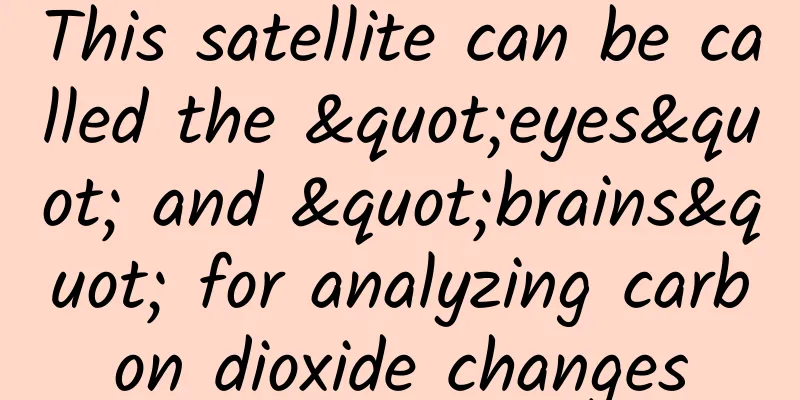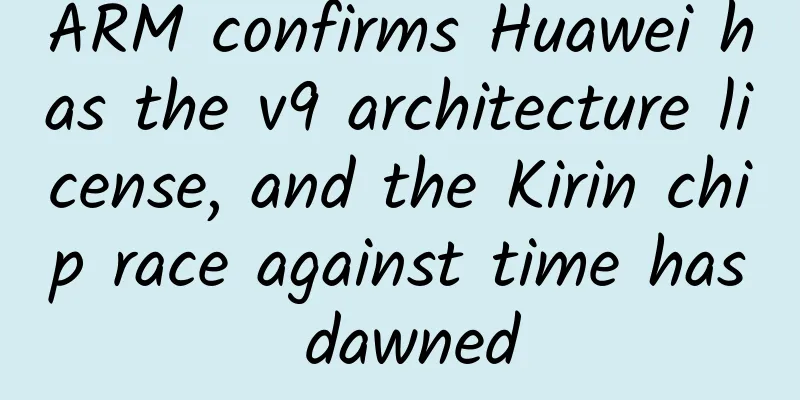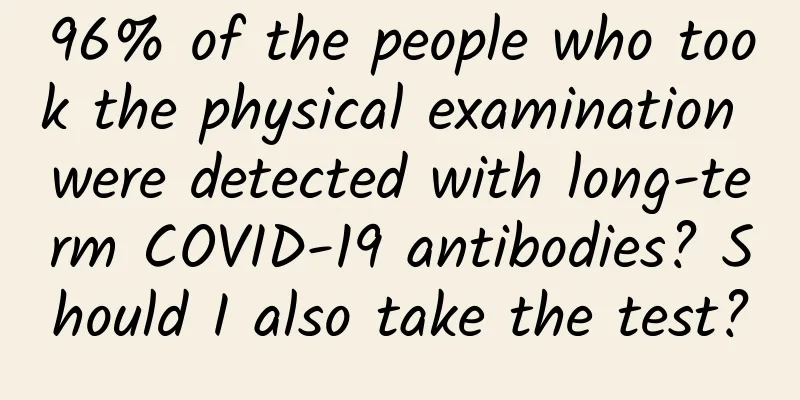This satellite can be called the "eyes" and "brains" for analyzing carbon dioxide changes

|
Produced by: Science Popularization China Author: Yang Dongxu (Institute of Atmospheric Physics, Chinese Academy of Sciences) Producer: China Science Expo Editor's note: In order to unveil the mystery of scientific work, the China Science Popularization Frontier Science Project launched a series of articles called "Me and My Research", inviting scientists to write articles themselves, share their scientific research experiences, and create a scientific world. Let us follow the explorers at the forefront of science and technology and embark on a journey full of passion, challenges, and surprises. In the vast universe, the Earth is our only home, and its health and future concern all mankind. With the acceleration of industrialization and the sharp increase in energy consumption, the concentration of carbon dioxide in the atmosphere continues to rise. Climate change has become a global issue that cannot be ignored, and effective response has become a challenge to the survival of the community with a shared future for mankind. In order to protect this blue planet, scientists are constantly exploring and innovating. Among them, carbon monitoring satellites are conducting an unprecedented "CT scan" for the Earth's atmosphere with their unique perspective and precise capabilities. At 3:22 am on December 22, 2016, my country successfully launched the Global Carbon Dioxide Monitoring Scientific Experiment Satellite into space using the Long March 2D carrier rocket at the Jiuquan Satellite Launch Center. (Photo source: Xinhuanet) Carbon monitoring satellites soar ten thousand meters in the sky, using their sharp "eyes" to capture changes in carbon dioxide in the atmosphere and their intelligent "brains" to analyze the scientific mysteries behind the data. Carbon Monitoring In short, carbon monitoring is a scientific and technological means of monitoring the concentration of greenhouse gases such as carbon dioxide in the atmosphere in real time to understand their emissions, absorption and spatial distribution. Carbon monitoring plays a vital role in the "dual carbon" strategic goals. With the continuous increase in carbon dioxide emissions caused by human activities, climate change has become a serious challenge facing the world. In order to slow down this trend and find ways to adapt, we need to use carbon monitoring to understand the temporal and spatial changes of carbon dioxide, the mechanisms behind it and its scientific laws. This not only provides a solid data and scientific basis for the completion of the "dual carbon" strategic goals in the future, but is also the key to promoting the transformation of production and lifestyle and achieving harmonious coexistence between man and nature. Carbon satellite simulation work map (Image source: Microsatellite Innovation Institute of the Chinese Academy of Sciences) At present, there are two main ways of carbon monitoring. One is bottom-up monitoring , which gradually accumulates and monitors microscopic processes (such as fossil fuel combustion, electricity consumption, etc.) to obtain the overall carbon emissions or carbon sinks. This method has the advantage of clear individual carbon processes and can directly reflect the carbon usage or energy usage at the department level. The other is top-down monitoring . In comparison, the top-down monitoring method is more novel and advanced. It monitors the changes in the amount of carbon dioxide in the atmosphere and infers the source and destination of carbon emissions. This method can be used for real-time monitoring and accurately grasp the total amount of overall emissions. It can not only reveal the spatial distribution of carbon emissions, but also provide a scientific basis for the precise control of carbon emissions. Carbon monitoring satellites are a top-down monitoring of carbon. From Nothing to Something China Carbon Satellite is the third greenhouse gas monitoring satellite in the world, following Japan's GOSAT satellite and the United States' OCO-2 satellite. Why does my country need to launch a carbon monitoring satellite when there are already two carbon monitoring satellites in the world? In fact, although our satellite is the third satellite, all three satellites were developed in the same period. There were no mature cases to refer to during the development of my country's carbon monitoring satellites, so the technical starting points of these three satellites were similar. During the development process, we also crossed the river by feeling the stones and broke through many key technologies. The main purpose of my country's development of a carbon monitoring satellite is to break through the technology of space carbon monitoring and achieve a process from 0 to 1, from nothing to something. The launch of this satellite marks an important step forward for my country in the field of carbon monitoring. Satellite rendering of the Global Carbon Dioxide Monitoring Scientific Experiment (Image source: Institute of Atmospheric Physics, Chinese Academy of Sciences) The satellite was designed with full consideration of the impact of aerosols and clouds on the accuracy of carbon dioxide monitoring, and is equipped with multiple payloads to improve monitoring accuracy. Compared with Japan's GOSAT satellite and the United States' OCO-2 satellite, my country's carbon satellite has achieved a number of technological breakthroughs and has become an important member of the international carbon monitoring field. Through years of operation and scientific experiments, my country's carbon satellite has achieved many important results. It obtained the distribution data of global carbon dioxide concentration for the first time and successfully monitored the distribution of global carbon emissions and carbon sinks. In addition, my country's carbon satellite has also achieved the first monitoring of carbon emissions in Chinese and international cities, providing valuable data support for global climate change research. Strive for excellence my country's carbon monitoring satellites calculate the carbon dioxide content in the atmosphere by monitoring the absorption spectrum of carbon dioxide in the atmosphere. Since the distribution of carbon dioxide in the atmosphere is uneven, it is necessary to further trace the source of carbon dioxide through atmospheric inversion methods and atmospheric transport models. The orbital altitude of the carbon monitoring satellite is about 700 kilometers from the ground. By monitoring the changes in atmospheric carbon dioxide at this altitude, we can also reduce the data error to 0.5%. We have made a lot of efforts. In order to ensure the accuracy of monitoring data, we have carefully designed and optimized both hardware and software. Carbon monitoring satellites need to have long-term stable observation capabilities and be able to identify the absorption spectrum of carbon dioxide with high precision. At the same time, the software system also needs to fully consider the impact of factors such as solar radiation, atmosphere and surface on monitoring data to ensure the extraction of high-precision carbon dioxide data information. In addition, the calibration and verification of the ground system is also an important part of ensuring monitoring accuracy. The raw signals observed by carbon monitoring satellites need to go through multiple steps such as positioning and calibration before they can be converted into information about carbon dioxide content. Furthermore, assimilation and inversion calculations are required to infer carbon emission data. These data are of great significance for assessing the current status of global carbon emissions, analyzing historical trends and predicting future changes. At the same time, they also provide strong data support for formulating scientific and reasonable emission reduction policies and promoting green and low-carbon development. Conclusion As a technological pioneer in addressing global climate change, carbon monitoring satellites are helping us better understand the changes in carbon dioxide in the atmosphere through their precise monitoring and scientific analysis. They are also contributing wisdom and strength to achieving the "dual carbon" goals and promoting sustainable development. |
<<: Dizziness "first reaction": Is it Meniere's?
>>: What are those little red spots that suddenly appear on my body? Can they turn into cancer?
Recommend
Master Lu Power Consumption Test Report Issue 2: vivo S18 wins the championship, Blue Ocean Battery has something special
As the year draws to a close, those friends who h...
What is the reason for accelerating the construction of a unified national market? What kind of national unified market should be built?
On April 10, the "Opinions of the CPC Centra...
The bad things in operation: a lot of nonsense and bitter tears
Compared with other positions, the job of " ...
There are new discoveries in the Mausoleum of Qin Shihuang!
Remains of a four-wheeled wooden cart discovered ...
Why are all the ads I see on TikTok games?
Capture SSS-level Lingkun at the beginning, 5th t...
Wang Yuquan · Frontier Technology Training Camp Baidu Cloud Download
Wang Yuquan · Qianshao Technology Training Camp R...
Title creation method: How to choose a title for a recommendation channel?
Regarding the skills of choosing titles , I think...
Xiaohongshu Hot Item Guide: The Secret to Achieving One Million in Monthly Sales from 0 in 3 Months!
As of May 2019, the number of registered users on...
China, a karst country
Karst landforms are widely distributed in the wor...
How do I check the headline index of my Toutiao account? How do I check the Toutiao index today?
Same problem: Where can I check the Toutiao Index...
Multi-style card stacking view--ZLSwipeableViewSwift
Source code introduction: It can realize the card...
Man's Country Project Course, follow the footsteps of money-making masters to make 100,000+ yuan a month by doing projects
Man Country Project Course, follow the footsteps ...
These magical stripes have ruined countless photos, but they can also be so beautiful!
This magical stripe has ruined countless photos, ...
How to build an effective user incentive system?
How to guide users to take action? How to promote...
How to identify and acquire high-value super users?
Super users are users who are willing to pay for ...









